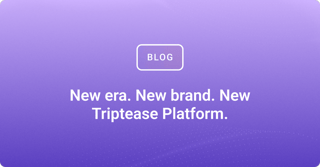Across the millions of meta auctions we’ve participated in on behalf of our partner hotels, we’ve taken a closer look at how device, check-in day of the week, ad position and a number of other factors have an impact on a hotel’s metasearch conversion rate. While these conclusions are a fascinating way of understanding the hidden mechanics of metasearch, they are just a few pieces of the puzzle. A successful approach to traffic acquisition needs a continuous focus on the ever-changing industry trends across a number of different variables, and must be operated by a team that is able to put them to work within your hotel’s bespoke meta strategy.
First the worst; fourth the best?
As in any other auction, you’d expect that bidding the highest, winning the race and appearing at the top of the listings would be the most logical meta strategy. From the beginning, the language around metasearch auctions and bidding has encouraged hotels to put everything on the line to come out on top, and Google’s FAQs even remind advertisers that “ads in higher positions are typically seen first by users, and tend to get more clicks”. This statement is fundamentally correct, and as it’s in their interest for distributors to compete and provide them with the highest ad revenue, you can understand why Google support this approach.
However, isolating the impact of ad position on return-on-ad-spend (ROAS) provides an entirely different perspective on metasearch bidding best practices. While the top position brings with it the greatest volume in terms of clicks, conversions and revenue, it also has the poorest ROAS - only 8.9. In comparison, fourth place provides the highest ROAS of listings appearing ‘above the fold’ with a substantial 17.1, with third and second place following closely behind with 14.9 and 13.4 respectively.
It’s become received wisdom that advertisers should prioritize ROAS over all other metrics on metasearch, but there’s a glaring problem with this approach. If a hotel decided to only bid for fourth-place positions, they would lose out on the significant volume of clicks generated by a higher placement. It’s much easier to achieve twice the ROAS on a tenth of the traffic.
Let’s look at the context behind the numbers. For the majority of potential guests, search engines are useful at the very start of the booking journey, so booking intent behind a click may be incredibly small at this point. The top listing on a metasearch auction receives a disproportionate amount of impressions and clicks from people simply wanting to click through and find out more information about the hotel. Even if the absolute number of conversions generated by a first-place listing is higher due to the sheer volume of traffic, it will be compensated for by a low return on spend.
Conversely, hotels ‘below the fold’ (fifth or below on most desktop metasearch listings) have a far higher ROAS and conversion rate than the top four results. However, they receive a fraction of the number of conversions that the results ‘above the fold’ do, and have a significantly lower clickthrough rate. One reason for this could be that ‘below the fold’ listings require an extra click to become visible. Far fewer people take that step than click on the first listing, but if they do, they are more likely to have a higher booking intent: they’re invested in carefully evaluating their options, and are therefore more likely to make a booking once they choose a platform.
But does all this mean that hotels are only left with two options: bid high for volume, bid low for ROAS? Thankfully, metasearch isn’t that black and white.
Perfectly balanced, as all things should be
To be able to effectively compete against colossal OTA marketing budgets, hotels need to break away from a rigid focus on either ROAS or volume and instead introduce a smart bidding strategy that combines the two. This means taking an approach to metasearch that dynamically varies for each unique guest that searches for your hotel, but also that isn’t focused solely on a specific metric for success. A high ROAS ‘below the fold’ may only result in a handful of listings, whilst the OTA partners at the top of the pile receive the lion’s share of searcher traffic.
Similarly, trying to gazump third parties and win the metasearch auction for every guest will be expensive, with your clicks dominated by people who have little intent and are unlikely to convert. While you’ll want to win the auction when bidding for high-value guests that you know are likely to convert, the second or third spots can provide a good compromise between exposure and expenditure in certain circumstances. There are even times when the best option is to not bid at all, especially when you’re being undercut by an OTA. Ultimately, a successful metasearch strategy is driven by your ability to quickly react to these different scenarios and alter your bid accordingly.
Metasearch is the fastest-growing distribution channel, and a brilliant way for hotels of all sizes to attract OTA-level volume at a significantly cheaper rate. However, a static ‘set and forget’ approach to meta can not only squander this potential, but even drive guests away from your direct channel. It doesn’t have to be this way, though. Hotels know their guests better than anyone, and need to start leveraging this valuable data to make smarter metasearch bidding decisions.
If you'd like to see how the Triptease platform can help your hotel make smarter metasearch bidding decisions to acquire and convert more guests through your direct channel, get in touch to learn more!
Rob is a Content & Product Marketing Executive with Triptease, and loves helping hotels attract and convert direct bookings, cats and loud music.

![[WATCH] A/B testing for hotels](https://www.triptease.com/hs-fs/hubfs/Resources%20-%20feature%20images/Feature-Image_%5B%5BWATCH%5D%20AB%20testing%20for%20hotels%5D.png?width=320&height=320&name=Feature-Image_%5B%5BWATCH%5D%20AB%20testing%20for%20hotels%5D.png)


![[WATCH] How hotels can win on Paid Search in 2022](https://www.triptease.com/hs-fs/hubfs/Resources%20-%20feature%20images/Feature-Image_%5B%5BWATCH%5D%20How%20hotels%20can%20win%20on%20Paid%20Search%20in%202022%5D.png?width=320&height=320&name=Feature-Image_%5B%5BWATCH%5D%20How%20hotels%20can%20win%20on%20Paid%20Search%20in%202022%5D.png)



